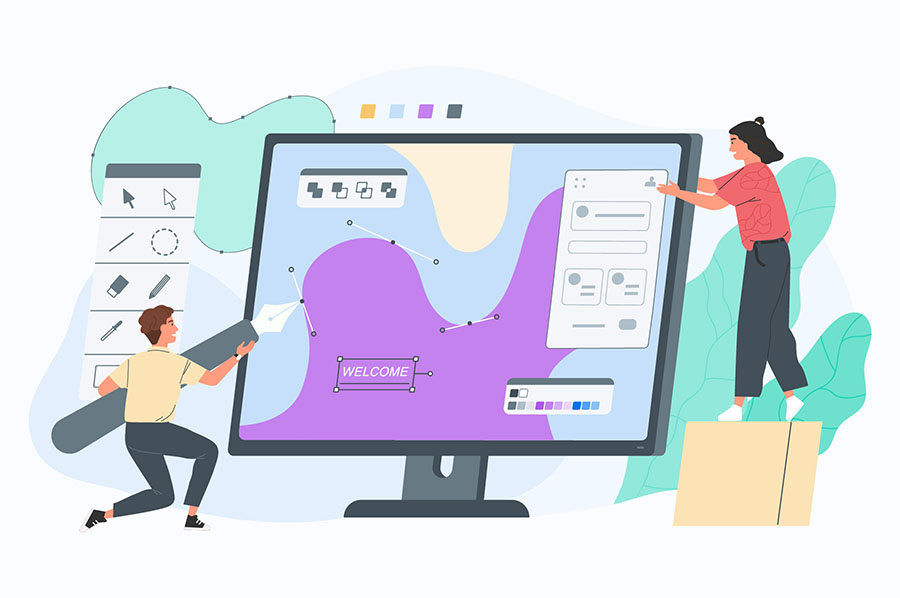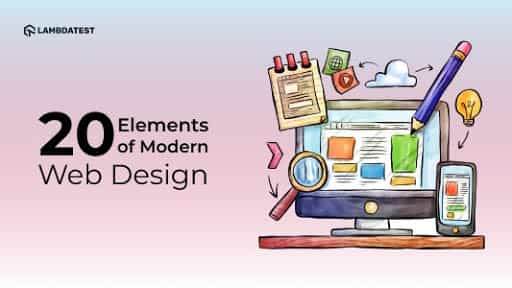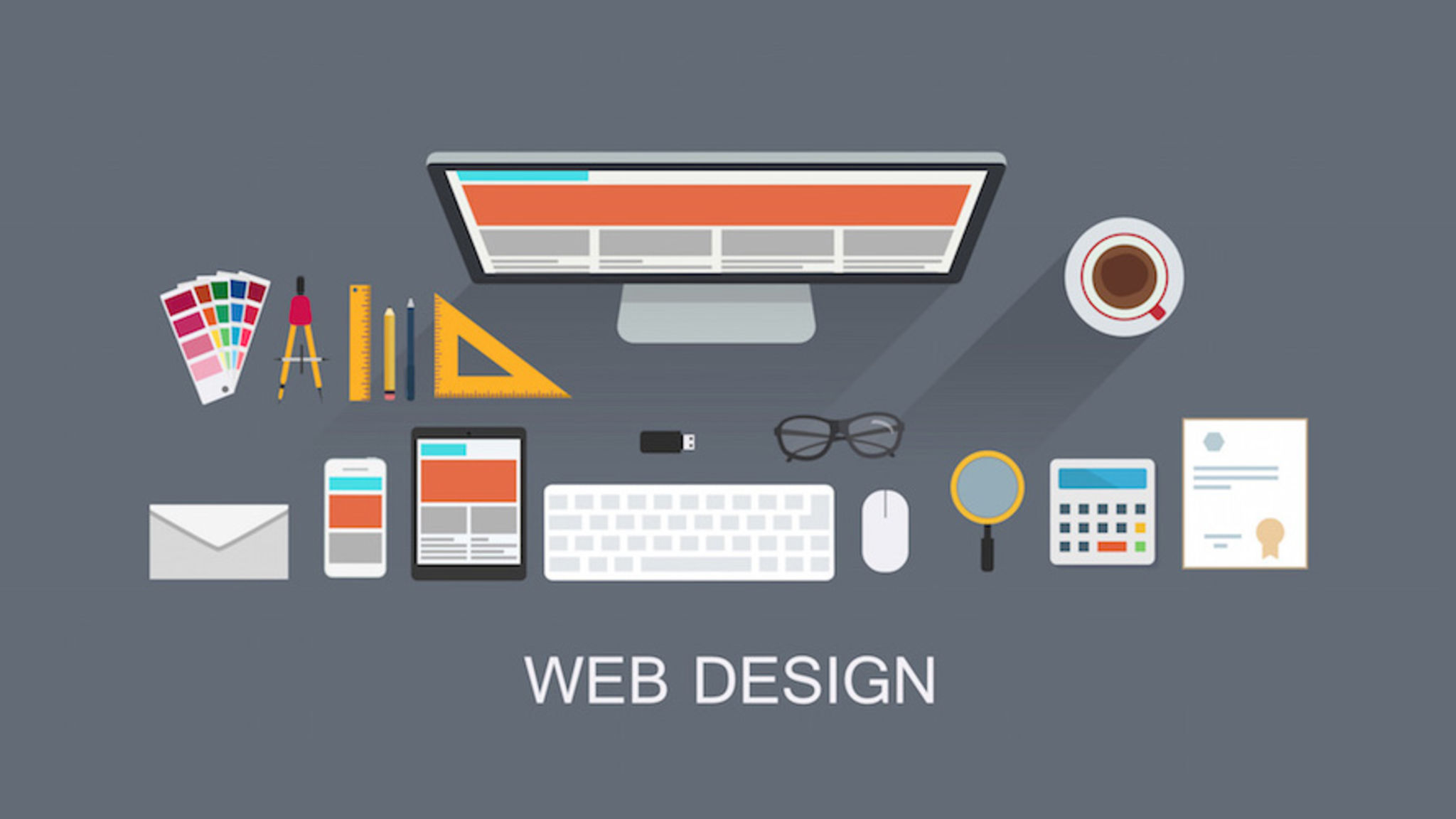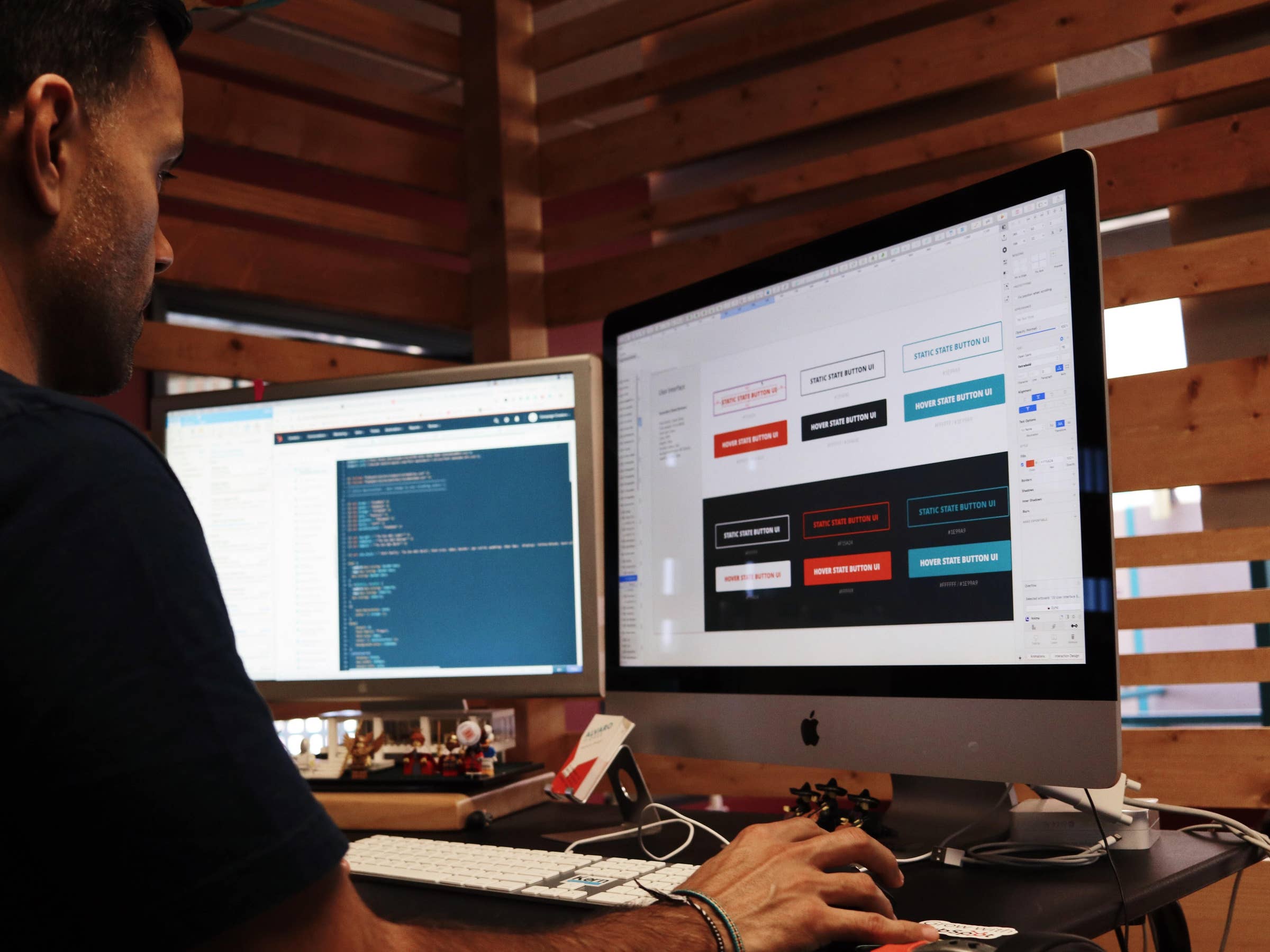All Categories
Featured
Table of Contents
- – Penner Home - Durham Web Design - Penner Web D...
- – Pueblo Web Design Tips and Tricks:
- – Webdesign Designs, Themes, Templates And ... ...
- – The Leader In Website Design – Squarespace Ti...
- – Responsive Web Design Certification - Freecod...
- – Boxcar Studio - Wordpress & Drupal Web Design...
- – Web Design Services - Verizon Small Business...
- – Basics Of Web Development & Coding Specializ...
- – Top 30 Web Design Companies - Apr 2022 - Des...
- – Web Design And Engineering Major - Santa Cla...
- – 10 Good Deeds In Web Design - Nielsen Norman...
Penner Home - Durham Web Design - Penner Web Design ... Tips and Tricks:
Quick summary Use and the utility, not the visual style, determine the success or failure of a site. Since the visitor of the page is the only individual who clicks the mouse and for that reason chooses everything, user-centric design has established as a basic approach for successful and profit-oriented web style - web design frederick md.
and the utility, not the visual design, identify the success or failure of a site. Considering that the visitor of the page is the only person who clicks the mouse and therefore chooses everything, user-centric design has actually ended up being a basic approach for effective and profit-oriented website design. After all, if users can't use a feature, it may as well not exist.
g. where the search box need to be positioned) as it has currently been done in a number of articles; rather we focus on the methods which, utilized appropriately, can lead to more sophisticated style choices and simplify the process of viewing provided details. Please observe that you may be interested in the usability-related articles we have actually released prior to: Principles Of Good Website Style And Effective Website Design Standards, In order to use the principles properly we initially need to understand how users communicate with websites, how they believe and what are the basic patterns of users' habits.
Pueblo Web Design Tips and Tricks:
Visitors glimpse at each brand-new page, scan some of the text, and click the very first link that captures their interest or vaguely looks like the thing they're looking for. In reality, there are large parts of the page they do not even take a look at. Most users browse for something interesting (or helpful) and clickable; as quickly as some appealing candidates are discovered, users click.
If a page offers users with high-quality material, they want to compromise the content with advertisements and the style of the website. This is the reason not-that-well-designed sites with premium material acquire a great deal of traffic over years. Material is more crucial than the style which supports it.

Users don't check out, they scan. Notification how "hot" areas abrupt in the middle of sentences. This is typical for the scanning process. Very simple principle: If a website isn't able to meet users' expectations, then designer stopped working to get his job done appropriately and the business loses money. The higher is the cognitive load and the less user-friendly is the navigation, the more willing are users to leave the site and search for alternatives.
Webdesign Designs, Themes, Templates And ... - Dribbble Tips and Tricks:
Neither do they scan website in a linear fashion, going sequentially from one website section to another one. Rather users satisfice; they select the first affordable choice. As quickly as they discover a link that appears like it might lead to the objective, there is an excellent opportunity that it will be immediately clicked.
It doesn't matter to us if we comprehend how things work, as long as we can utilize them. If your audience is going to act like you're developing billboard, then style great signboards." Users desire to have the ability to control their browser and depend on the consistent information discussion throughout the website.
If the navigation and website architecture aren't intuitive, the number of concern marks grows and makes it harder for users to comprehend how the system works and how to get from point A to point B. A clear structure, moderate visual ideas and easily identifiable links can assist users to find their path to their goal.
The Leader In Website Design – Squarespace Tips and Tricks:

claims to be "beyond channels, beyond items, beyond distribution". What does it indicate? Since users tend to explore sites according to the "F"-pattern, these 3 declarations would be the very first elements users will see on the page once it is filled. Although the style itself is simple and instinctive, to understand what the page has to do with the user requires to look for the answer.
As soon as you have actually achieved this, you can communicate why the system works and how users can gain from it. Individuals won't use your web website if they can't discover their way around it. 2. Don't Misuse Users' Perseverance, In every project when you are going to provide your visitors some service or tool, try to keep your user requirements very little.
Newbie visitors want to, not filling long web kinds for an account they may never utilize in the future. Let users check out the site and find your services without requiring them into sharing personal information. It's not sensible to force users to enter an email address to test the feature.
Responsive Web Design Certification - Freecodecamp.org Tips and Tricks:
Stikkit is an ideal example for an user-friendly service which requires almost absolutely nothing from the visitor which is inconspicuous and soothing. And that's what you desire your users to feel on your web site. Obviously, Mite requires more. However the registration can be done in less than 30 seconds as the kind has horizontal orientation, the user doesn't even need to scroll the page.
A user registration alone is sufficient of an obstacle to user navigation to reduce incoming traffic. 3. Handle To Focus Users' Attention, As websites offer both static and dynamic content, some elements of the user interface draw in attention more than others do. Certainly, images are more eye-catching than the text just as the sentences marked as bold are more attractive than plain text.
Focusing users' attention to specific areas of the site with a moderate use of visual elements can assist your visitors to receive from point A to point B without thinking of how it really is expected to be done. The less enigma visitors have, the they have and the more trust they can develop towards the business the website represents.
Boxcar Studio - Wordpress & Drupal Web Design ... - Ann Arbor Tips and Tricks:
4. Strive For Feature Exposure, Modern website design are usually slammed due to their approach of directing users with aesthetically appealing 1-2-3-done-steps, large buttons with visual impacts and so on. But from the style viewpoint these components in fact aren't a bad thing. On the contrary, such as they lead the visitors through the website content in a very basic and user-friendly way.
The site has 9 main navigation options which are visible at the very first glance. What matters is that the content is well-understood and visitors feel comfy with the way they connect with the system.
Rather a rate: just what visitors are looking for. An optimum service for effective writing is touse brief and concise expressions (come to the point as rapidly as possible), use scannable design (categorize the content, utilize several heading levels, use visual aspects and bulleted lists which break the flow of consistent text blocks), usage plain and unbiased language (a promo doesn't need to sound like advertisement; offer your users some reasonable and unbiased factor why they ought to utilize your service or stay on your site)6.
Web Design Services - Verizon Small Business Essentials Tips and Tricks:
Users are rarely on a website to delight in the design; in addition, most of the times they are looking for the information despite the style - web design frederick md. Make every effort for simpleness rather of intricacy. From the visitors' perspective, the finest site design is a pure text, with no advertisements or more material blocks matching exactly the query visitors utilized or the content they've been looking for.
Finch clearly provides the information about the website and gives visitors an option of options without overcrowding them with unnecessary content. Not just does it help to for the visitors, but it makes it possible to perceive the info presented on the screen.
Complex structures are harder to check out, scan, evaluate and work with. If you have the choice in between separating 2 style sections by a noticeable line or by some whitespace, it's generally better to use the whitespace option. (Simon's Law): the better you manage to offer users with a sense of visual hierarchy, the easier your content will be to perceive.
Basics Of Web Development & Coding Specialization - Coursera Tips and Tricks:
The same conventions and rules should be applied to all elements.: do the most with the least amount of cues and visual aspects. Four significant points to be thought about: simplicity, clarity, distinctiveness, and emphasis. Simpleness includes just the components that are most important for interaction. Clearness: all parts should be designed so their meaning is not ambiguous.
Conventions Are Our Buddies, Conventional design of site aspects doesn't result in an uninteresting web website. It would be an use problem if all sites had different visual discussion of RSS-feeds.
comprehend what they're anticipating from a site navigation, text structure, search positioning etc. A case in point from functionality sessions is to translate the page in Japanese (assuming your web users do not know Japanese, e. g. with Babelfish) and offer your usability testers with a task to discover something in the page of different language.
Top 30 Web Design Companies - Apr 2022 - Designrush Tips and Tricks:
Test Early, Test Often, This so-called TETO-principle ought to be used to every web style project as usability tests typically offer into significant problems and problems related to a provided layout. Test not too late, not too little and not for the wrong reasons.
Some essential points to bear in mind: according to Steve Krug, and testing one user early in the job is better than screening 50 near completion. Accoring to Boehm's first law, mistakes are most frequent during requirements and design activities and are the more costly the later they are eliminated.
That means that you create something, test it, fix it and after that check it again. There may be issues which haven't been found during the very first round as users were almost blocked by other problems. functionality tests. Either you'll be pointed to the issues you have or you'll be indicated the lack of major style flaws which is in both cases a beneficial insight for your task.
Web Design And Engineering Major - Santa Clara University Tips and Tricks:

This holds for designers. After you have actually worked on a website for few weeks, you can't observe it from a fresh perspective anymore. You know how it is built and for that reason you understand precisely how it works you have the knowledge independent testers and visitors of your site wouldn't have.
It can be linked to other locations such as graphic design, user experience, and multimedia arts, however is more appropriately seen from a technological viewpoint. It has actually ended up being a big part of individuals's everyday lives. It is hard to imagine the Internet without animated graphics, various styles of typography, background, videos and music.

Throughout 1991 to 1993 the World Wide Web was born. Text-only pages could be seen utilizing a simple line-mode browser. In 1993 Marc Andreessen and Eric Bina, created the Mosaic internet browser. At the time there were multiple internet browsers, nevertheless the bulk of them were Unix-based and naturally text heavy. There had actually been no integrated approach to graphic design elements such as images or noises.
10 Good Deeds In Web Design - Nielsen Norman Group Tips and Tricks:
The W3C was developed in October 1994 to "lead the World Wide Web to its full potential by establishing common procedures that promote its advancement and ensure its interoperability." This prevented any one business from monopolizing a propriety browser and shows language, which might have modified the result of the Internet as a whole.
As this has happened the innovation of the web has actually likewise moved on. There have also been significant modifications in the way people use and access the web, and this has altered how websites are created.
Learn more about Lovell Media Group LLC or TrainACETable of Contents
- – Penner Home - Durham Web Design - Penner Web D...
- – Pueblo Web Design Tips and Tricks:
- – Webdesign Designs, Themes, Templates And ... ...
- – The Leader In Website Design – Squarespace Ti...
- – Responsive Web Design Certification - Freecod...
- – Boxcar Studio - Wordpress & Drupal Web Design...
- – Web Design Services - Verizon Small Business...
- – Basics Of Web Development & Coding Specializ...
- – Top 30 Web Design Companies - Apr 2022 - Des...
- – Web Design And Engineering Major - Santa Cla...
- – 10 Good Deeds In Web Design - Nielsen Norman...
Latest Posts
Html Responsive Web Design - W3schools Tips and Tricks:
Web Design Projects - Behance Tips and Tricks:
Mrw Web Design - Wordpress Websites For Nonprofits ... Tips and Tricks:
More
Latest Posts
Html Responsive Web Design - W3schools Tips and Tricks:
Web Design Projects - Behance Tips and Tricks:
Mrw Web Design - Wordpress Websites For Nonprofits ... Tips and Tricks: